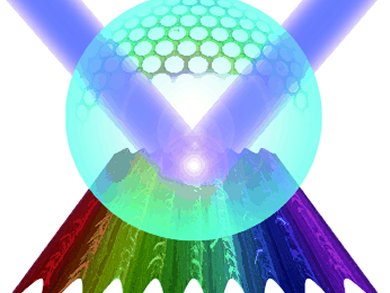Many natural superhydrophobic surfaces, such as butterfly wings and rose petals, display a hierarchical micro- or nanostructure. The attractive properties of these surfaces, including their spectacular iridescent colors, have generated significant research interest.
A group led by Yong-Lai Zhang and Hong-Bo Sun, Jilin University, Changchun, China, has now succeeded in preparing a superhydrophobic graphene surface with properties comparable to its natural counterparts. They split a 355 nm laser beam into two branches and guided it to interfere directly on the surface of a graphene oxide film. This method fabricates a periodic microscale grating structure while simultaneously removing the oxygen groups on the graphene oxide film.
The resulting superhydrophobic film showed colorful iridescence and unique high adhesion. Such surfaces could be used for applications in water transport and microfluidic devices and demonstrate how the wettability of graphene can be controlled.
- Biomimetic Graphene Surfaces with Superhydrophobicity and Iridescence,
J.-N. Wang, R.-Q. Shao, Y.-L. Zhang, L. Guo, H.-B. Jiang, D.-X. Lu, H.-B. Sun,
Chem. Asian J. 2012.
DOI: 10.1002/asia.201100882




